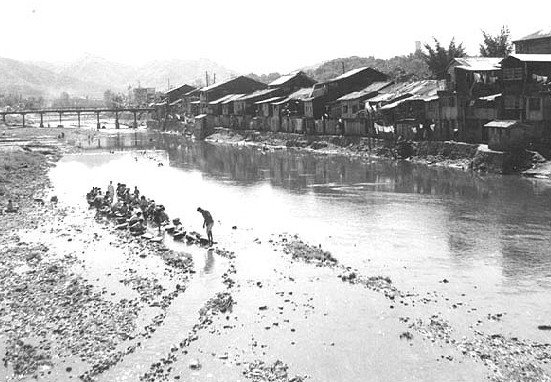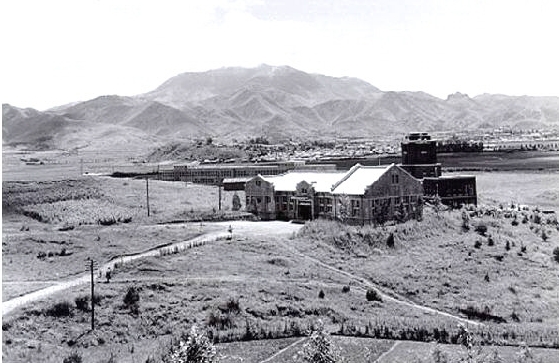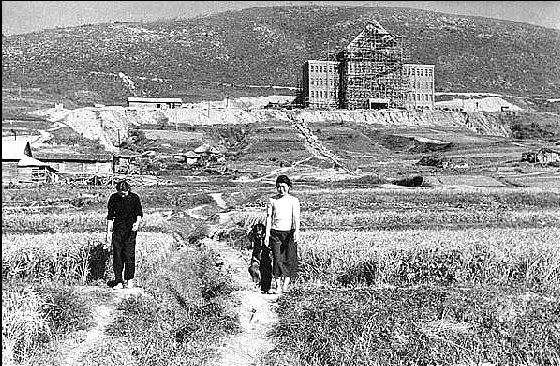The History of Gwangju
Written by An Se-in, in cooperation with Hong Chang-woo
Photographs courtesy of Gwangju Metropolitan City
Originally published March 2014 #145
What is Gwangju? Gwangju has been called the city of Uihyang (의향), Yehyang (예향), and Mihyang (미향). From the Imjin War (1592–1598) to the May 18 Democratic Movement (1980), Gwangju has taken pride in being a righteous city (Uihyang), growing as a city internationally renowned for its commitment to human rights. As a city of art (Yehyang), Gwangju is the home of artists such as Im Bang-ul, who was a master singer of pansori, and Korean painter Heo Baek-ryeon. Gwangju is also the host city of the Biennale, which has been drawing attention from contemporary artists across the world. Finally, Gwangju is well-known for delicious cuisine (Mihyang), not least for its annual World Kimchi Culture Festival.
The history of Gwangju started in prehistory. Human artifacts from the Stone Age, as well as from the Bronze Age and the Iron Age, have been discovered in its region. Many examples of the “jar burial,” a unique style of tomb, have been discovered in Gwangju–Yeongsan River area.

The Samhan states (Mahan, Jinhan, and Byeonhan) eventually developed in the southern part of the Korean peninsula. Of those three states, Gwangju belonged to Mahan. After that period, the three ancient kingdoms Goguryeo, Baekje, and Silla were established, and Gwangju came under the control of Baekje (18–660 CE). At that time, Gwangju was called Mujinju.
In 660 CE, Silla joined hands with the Tang of ancient China and unified the three kingdoms. In Unified Silla, Gwangju remained Mujinju for a while, but eventually changed its name to Muju. At the end of the Silla Dynasty, many new powers rose up and began the Later Three Kingdoms Period. In 892, Kyeon Hweon established posts in Baekje, based in Jeolla areas like Jeonju and Muju.
The three kingdoms were finally reunified by Goryeo in 936. During the Goryeo Dynasty, the name Gwangju began to be used for the first time in 940, but often changed to various other names due to elevations or degradations of the city’s status.

In the 13th century, the Mongol Empire invaded Goryeo. At the time, Goryeo’s government was dominated by military officials called Musin. Because of the endless war and the Musin’s exploitation, many revolts occurred across the country. In Gwangju, Lee Yeon-nyeon rebelled against his people’s harsh treatment (1237). Goryeo continuously stood against the Mongols, but had to surrender in the end. However, Sam-byeol-cho, leader of the Musin government’s special forces, fought against the Mongolian army to the last (1270-1273). His men rose up in Ganghwa Island and then moved to Jindo Island in modern South Jeolla Province, influencing the Gwangju area.
After the establishment of the Joseon Dynasty in 1392, the name of Gwangju continued to be used, but just as in the Goryeo period it frequently changed. Since Gwangju rests in a large plain and is located at a traffic point, it was rich in agricultural products, and trading was brisk.
Through the Joseon era, Gwangju became known as a town of loyal troops and Confucian scholars called Salim. New groups of Confucian trscholars influenced the progress of Neo-Confucianism in the Honam region. Arguments between Lee Hwang and Ki Dae-seung, particularly over explanations for the Neo-Confucian idea of sa-dan-chil-jung, had important influence on Confucian ideas. As a Gwangju scholar, Ki Dae-seung put emphasis on practice rather than theory. This period was a prime time for Confucianism and literature in Gwangju.
During the Imjin War, Ko Gyeong-myeong and Kim Deok-ryeong led loyal troops from the Gwangju region and played an important role in the war. South Jeolla was also the region where Admiral Yi Sun-shin famously defeated the Japanese navy.

In 1894, the Donghak (Eastern Learning) Peasantry Movement occurred in Jeolla as a response to imperialist countries coercing Joseon to open its ports to trade. Son Hwa-jung was one of three key figures of the Donghak Uprising in Gwangju. Even though the rebellion against Japanese influence and the feudal system ended in failure, it was an important historic event.
Gwangju was designated as the provincial capital of South Jeolla in 1896. Thereafter most public institutions were moved from the former capital of Naju to Gwangju.
During the Japanese occupation (1910–1945), the size of Gwangju grew and grew, since a lot of modern urban facilities like banks, schools, a train station, and hospitals were built. Under the banner of modernization, however, the Japanese also destroyed traditional roads and buildings.
Nevertheless, Gwangju played an important role in the era’s independence movement. There were huge demonstrations during the March 1 Movement of 1919 and during the Student’s Independence Movement in November, 1929, which started in Gwangju and spread throughout the country. To commemorate this, November 3 is designated as a memorial day for the Student’s Independence Movement.

After Korea gained independence, Gwangju developed in many new ways. From 1946 to 1958, 94 schools and two universities (Chonnam National University and Chosun University) were established, as well as courts, a newspaper company, and a broadcasting station. The population of Gwangju rose rapidly from 50,000 in 1939 to nearly 500,000 in 1970.
Last but not least, the May 18 Gwangju Democratic Movement exploded in 1980, a strong representation of the Uihyang spirit. After President Park Chung-hee was assassinated and Chun Doo-hwan seized power by coup, only Gwangju refused to cease demonstrating in the face of martial law. Students and citizens of Gwangju fought against the ROK Army, resulting in a lot of casualties. This is why May means a lot to Gwangju and Korea.
As the central city of the Honam area from old times, Gwangju has become one of the six metropolitan cities of Korea. In the future, Gwangju hopes to be a host city for international sports, since Gwangju is going to host the Summer Universiade in 2015. It also plans to be a hub city of Asian culture, building its Asia Culture Center in the downtown area.





